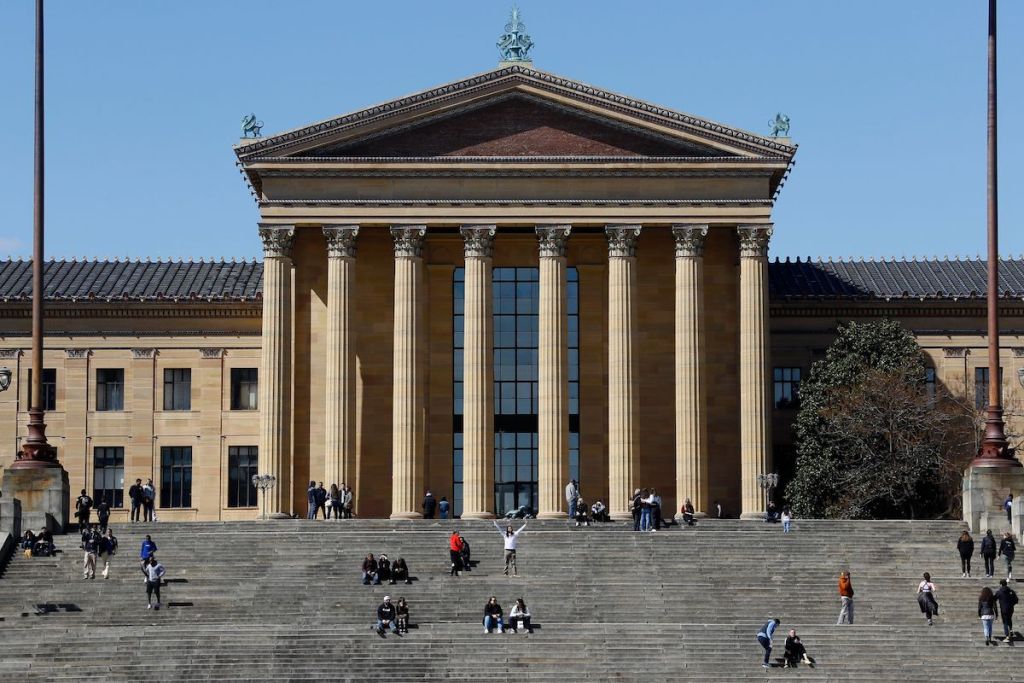[ad_1]
The Philadelphia Museum of Art has become the backdrop for some of the most impassioned calls from Black Lives Matter protesters in recent weeks, with thousands of protesters congregating on its steps each day to demand justice for George Floyd, Breonna Taylor, and countless other Black people killed by police. But inside the century-old institution, staff say that a statement from leadership acknowledging the unrest missed the mark and disrespected Black employees, only further fueling tensions that had already been brewing among workers at the museum.
Museum director Timothy Rub and president Gail Harrity emailed staff on May 31 with a letter describing Floyd’s death as “a sobering illustration of the racial and economic disparities that still divide and impoverish American society.” Employees said they were disturbed to see their bosses condemn otherwise peaceful protests as “compromised by the looting and destruction of property” while reaffirming that “every individual life matters.”
Five Black employees—some of them top managers at the museum—responded to leadership in a letter of their own the next day. “As each of us read this we were individually taken aback by the lack of compassion and empathy for the Black staff and contractors in this museum,” reads the response, which was reviewed by ARTnews. “Your email last night failed to recognize or ask how we, as Black people, must be feeling at this time. We are collectively feeling a wide range of emotions that are deeper than grief and frustration can encompass as descriptors. And we are tired and terrified for ourselves and our communities.”
The employees also pointed out that phrases like “every individual life matters” minimize the disproportionate effect that police brutality has on communities of color. “We ask that you take a really good look at how race impacts the museum,” they added.
On June 2, Rub and Harrity responded to upset employees with an apology: “You were right to say that our letter did not make an obvious and essential point, one that frames this incident in both specific and historical terms: This victim of this murder was an innocent Black man.”
But for many of the Philadelphia Museum’s staffers, the executives’ apology rang hollow.
“It was tone deaf,” said one Black employee, who asked to remain anonymous for fear of retaliation. “It feels like they don’t care about African Americans in the museum.”
“I was disappointed but not surprised,” said another, who was one of several employees to file a complaint with the human resources department against the art institution’s leaders.
A spokesperson for the museums declined to comment on the letters, saying “the email exchange speaks for itself.” According to the spokesperson, the museum held voluntary anti-oppression training in 2017 and required managers to take training that focused on racial discrimination and microaggressions in 2018.
Tensions have run high at the Philadelphia Museum for the last six months. In January, a New York Times report outlined nearly a dozen allegations of sexual misconduct against Joshua Helmer, a former education manager. Widespread criticism from employees and lawmakers led the museum to promise an overhaul of its harassment policies and a third-party review of its office culture. But in March, the coronavirus pandemic forced the museum to close its doors; employees were asked to take salary cuts to allay the institution’s projected shortfall in revenue.
Seeking to empower staff who had faced harassment and discrimination, employees announced a union drive last month and filed their petition with the National Labor Relations Board. At the time, a museum spokesman said that the institution recognized employees’ “right to organize.” On Monday, however, union organizers learned that the museum had retained the services of Morgan Lewis, a “union-busting” law firm that has already begun providing managers with webinars that discourage collective bargaining.
“The fact that management is trying to punch the brakes all of the sudden is an anti-democratic intervention,” said Alex Kauffman, a member of the union organizing committee, “but it shows that they think we can win.”
For Black staffers offended by the museum executives’ response to the George Floyd protests, a union can’t come soon enough.
“How many scandals have to break?” asked one African American employee, noting that the museum has never conducted unconscious bias or diversity training in his years of working there. “How many times do you have to be told you are doing something wrong?”
[ad_2]
Source link


